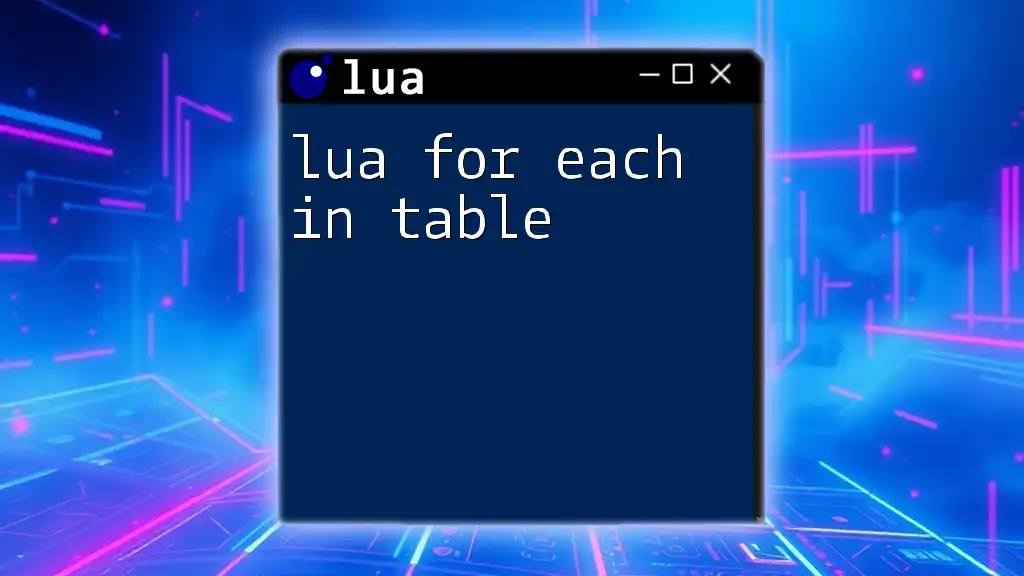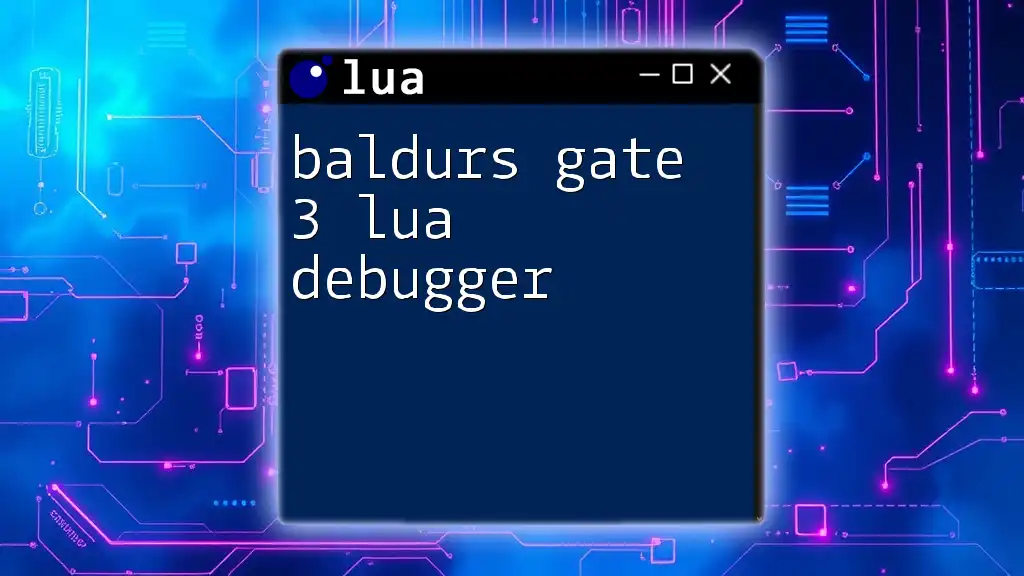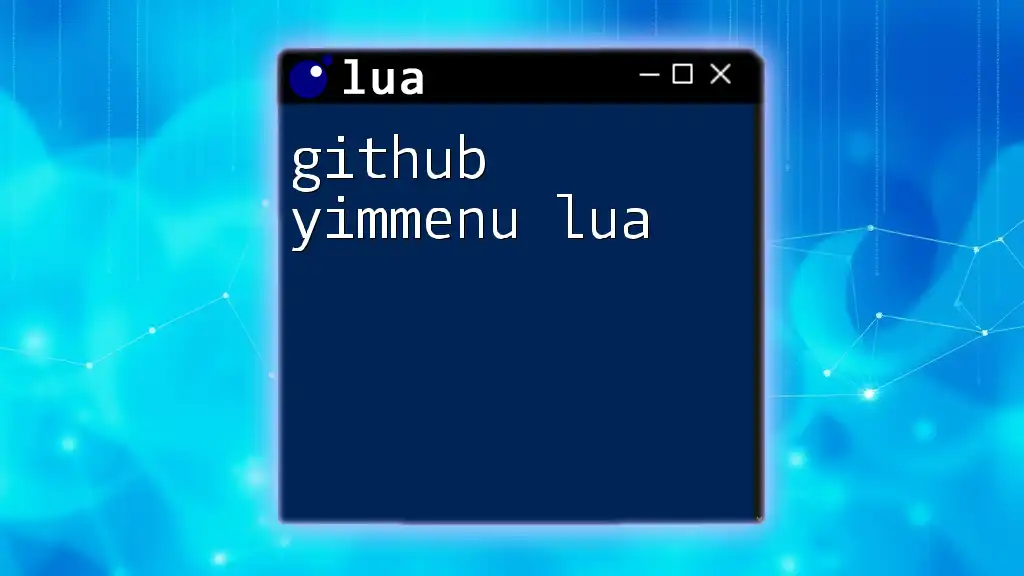In Lua, to retrieve the first element (i.e., the value at index 1) of each entry in a table, you can iterate through the table using a loop and access each entry by its index. Here’s a code snippet to demonstrate this:
local myTable = { {1, 2}, {3, 4}, {5, 6} }
for _, entry in ipairs(myTable) do
print(entry[1]) -- Accesses the first element of each sub-table
end
Understanding Lua Tables
What is a Lua Table?
A Lua table is a crucial data structure that serves as a versatile container for storing and managing collections of data. Tables can house multiple data types and act like both arrays and dictionaries, making them indispensable in Lua programming.
In Lua, tables are created using a simple syntax:
local fruits = { "apple", "banana", "cherry" }
In this example, `fruits` is a table that contains three elements, showcasing how tables can hold values in an organized manner.
Example of a Basic Lua Table
To further illustrate, consider this basic table that holds a few fruits:
local fruits = { "apple", "banana", "cherry" }
In this case, `fruits[1]` retrieves "apple", highlighting that Lua tables use one-based indexing, meaning that counting starts at one, unlike many programming languages that begin at zero.

Accessing Elements in a Lua Table
The Concept of Indexing
When working with tables, indexing is the mechanism by which we access specific elements. Understanding how to index correctly is vital, particularly in the context of the lua get [0] of each entry in table function we’re focusing on.
How to Access Individual Elements
To access individual elements in a Lua table, you can use the following syntax:
print(fruits[1]) -- Output: apple
When executed, this code prints out "apple", which is the first fruit in the `fruits` table.

Getting the First Entry of Each Table
Defining the Problem
Imagine we have a table of students, each represented as a table with a name and an age:
local students = {
{name = "Alice", age = 23},
{name = "Bob", age = 25},
{name = "Charlie", age = 22}
}
In scenarios like this, you may want to retrieve the first entry (the name of each student). This exercise exemplifies the lua get [0] of each entry in table functionality.
Basic Code to Retrieve First Entry
You can efficiently access the names of students with the following loop:
for _, student in ipairs(students) do
print(student.name)
end
This code utilizes `ipairs`, which iterates over the elements of the table in order. The output will be:
Alice
Bob
Charlie
This illustrates how to retrieve and display the first entry (or the name) of each entry in the `students` table.

Advanced Techniques for Manipulation
Custom Functions to Retrieve [0] of Each Entry
For greater flexibility, you can create a custom function specifically for this purpose:
local function getFirstEntries(tbl)
local firstNames = {}
for _, entry in ipairs(tbl) do
table.insert(firstNames, entry.name)
end
return firstNames
end
In this function, we define `getFirstEntries`, which takes a table as an argument and returns a new table containing only the names of the students. This approach is particularly useful when you want to keep your code modular and reusable.
Example Usage of the Function
You can combine the function with the `students` table to get a list of names:
local firstNames = getFirstEntries(students)
for _, name in ipairs(firstNames) do
print(name)
end
The output will be the same:
Alice
Bob
Charlie
This demonstrates how a custom function can encapsulate logic and improve code readability while achieving the desired outcome.

Handling Edge Cases
Empty Tables
It is essential to consider what happens when you try to access elements from an empty table. Attempting to retrieve names from an empty table could lead to unexpected results. To handle this situation gracefully, you could add a check:
if #students == 0 then
print("No students found.")
end
This code checks if the `students` table is empty and provides a clear message if there are no entries to process.
Tables with Missing Keys
In scenarios where not all entries contain the expected keys, such as a student missing a name:
for _, student in ipairs(students) do
if student.name then
print(student.name)
else
print("No name found.")
end
end
This code ensures that your program does not encounter runtime errors due to missing values, instead providing a fallback message to indicate missing data.

Conclusion
In conclusion, mastering how to retrieve the first entry from each entry in a Lua table is an invaluable skill when working with Lua. Understanding the structure of tables, the mechanics of indexing, and the ability to create custom functions allows for efficient data management and manipulation. To further enhance your knowledge, consider experimenting with different table structures and additional functions.

Additional Resources
For continued learning, explore the [Lua Documentation](https://www.lua.org/manual/5.1/) and various online tutorials, which provide in-depth knowledge of Lua's capabilities and intricacies.

![lua Get [0] of Each Entry in Table Explained](/images/posts/l/lua-get-0-of-each-entry-in-table.webp)














